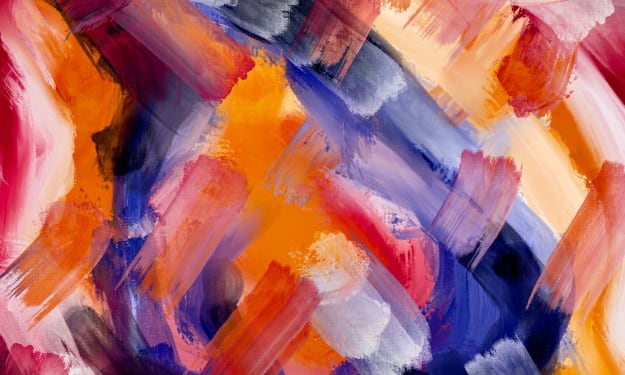Unlocking the Power of Perception
A Drawing Exercise that Transforms Perspective

Greetings, fellow artists and art enthusiasts! Today, I'm excited to share with you a drawing exercise that has had a profound impact on my artistic journey, and I believe it has the potential to do the same for you. Join me as I delve into this transformative technique that has changed the way I perceive the world around me.
Hello, everyone. I'm Matt from thevirtualinstructor.com, and in this video, I'm about to unveil a drawing exercise that has truly reshaped my artistic outlook. This exercise holds a special place in my heart because it marked a turning point in my journey. But before we dive into the details, if you haven't already, make sure to subscribe to our channel and ring that notification bell to stay updated on our new video releases. If you're keen to elevate your drawing and painting skills, check out our comprehensive program over at thevirtualinstructor.com. Our program offers a range of drawing and painting courses, live lessons, critiques, and a year-long curriculum for visual arts educators. You'll find a link in the description below to explore our program, complete with a week-long free trial. And if you're looking for a taste of our offerings, we're also providing a link for three free course videos and ebooks. Now, let's dive into the heart of this drawing exercise.
I vividly recall the moment I encountered this transformative exercise. I was around 12 years old, and it was a revelation that left an indelible mark on my artistic journey. This exercise, gleaned from the renowned book "Drawing on the Right Side of the Brain" by Betty Edwards, awakened me to the realization that drawing is not an inherent talent, but a skill that can be honed. This groundbreaking concept liberated me from preconceived notions and propelled me on a path of artistic discovery.
At the core of this exercise lies a profound understanding of our brain's hemispheres—the left and the right. While the left hemisphere is associated with analytical processes like mathematics, the right hemisphere thrives in the realm of creativity, encompassing drawing and painting. However, artistic endeavors demand a harmonious interplay between both hemispheres. Herein lies the challenge; the analytical left brain often hinders our ability to reproduce what we see accurately.
Think back to moments when you attempted to replicate an object—a shoe, perhaps—and despite your efforts, the outcome fell short of the reality. This discrepancy arises from the left brain's overpowering commands, causing our drawings to emerge as fragmented memorizations rather than authentic reflections of reality. The key lies in temporarily silencing the left brain's influence, allowing the intuitive right brain to guide our artistic expression.
This is where the drawing exercise comes into play. Picture this: we'll start with a photo reference of a subject. In this case, let's use this gentleman as our reference. The initial step involves transforming the photo reference into a line drawing. Tracing is a viable option for this process. Once we have the line drawing, we create an identical-sized drawing on paper. The twist? We invert the reference, turning it upside down. Now, as we draw, our focus shifts from the subject to the lines and shapes. The left brain's interference diminishes, and the right brain seizes control. This shift might not occur instantaneously, but with practice, the mind adapts, concentrating on capturing lines and shapes rather than objects.
Embrace the inevitability of mistakes—they signify your understanding of spatial relationships within the composition. As you progress through the exercise, you'll experience a cognitive shift, a departure from the norm, where the process takes precedence over the subject matter. This cognitive adjustment is the crux of the exercise, training the mind to perceive the world through an artist's lens.
Intriguingly, this exercise employs only lines, but it can also incorporate values and colors if desired. These elements—lines, shapes, forms, colors, values, and textures—constitute the artist's toolkit. We manipulate these components to convey our artistic vision. If you're adept, you'll recognize that these elements are the very building blocks of art.
To conclude the exercise, flip the drawing and compare it to the reference. While not identical, your drawing will exhibit a remarkable resemblance to the reference, illustrating the potency of perceptive drawing. The exercise serves as a testament that drawing is a learned skill—one that can be nurtured and refined.
As we wrap up, I hope this exercise resonates with you, opening new avenues of artistic exploration. Remember, the process of training the right brain to override the left is an ongoing journey. So, embrace this exercise periodically, rekindling your connection with the transformative power of perception.
Thank you for joining me on this artistic journey. Keep creating, keep exploring, and keep evolving. Until next time, happy drawing!





Comments
There are no comments for this story
Be the first to respond and start the conversation.